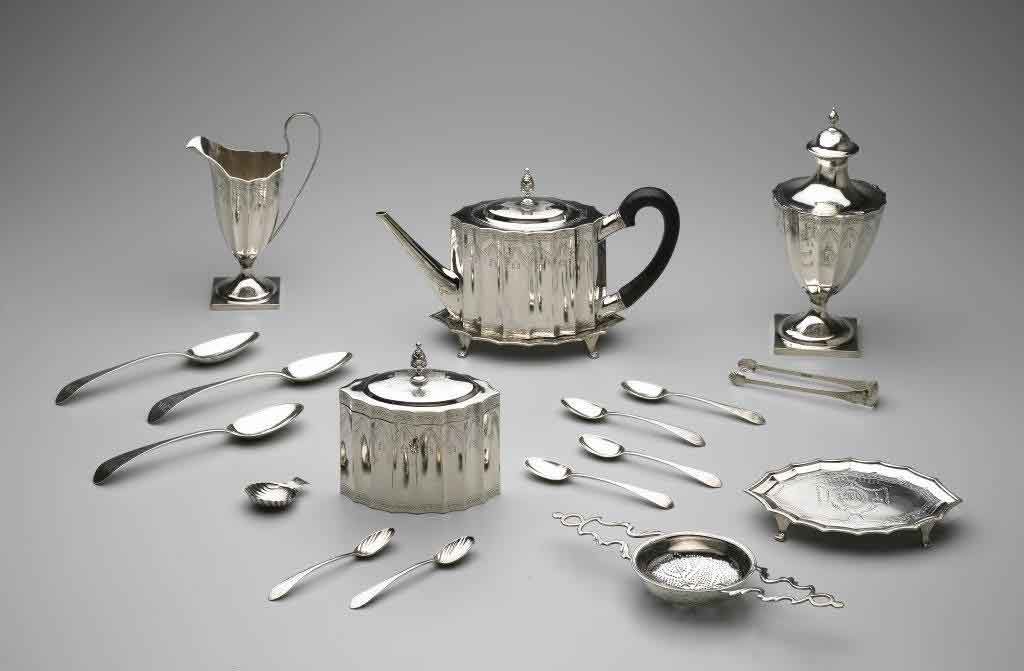The most extensive Federal-era tea service Paul Revere’s shop ever produced is included in the exhibition, Beyond Midnight: Paul Revere and His Ride, at the Concord Museum. Made for John and Mehitable Templeman in 1792, the set includes a teapot, tea caddy, sugar bowl, and cream pot that are fluted in emulation of the fluted columns of classical antiquity. If the style of this tea set summons the ancient past, its manufacture conjures the industrial future.
Colonial teapots began with an ingot of silver which was hammered out into a sheet. The sheet was then hammered into teapot form on iron stakes set in the work bench, a process known as raising. In the 1790s, Paul Revere employed a flatting mill, which uses steel rollers to flatten the ingot. This was the first one used in Boston and one of the first used in America. By about the year 1800, Revere used a similar technology to establish his copper rolling manufactory in Canton, Massachusetts. This earned him lucrative contracts to bottom the ships of the fledgling United States Navy. The famous copper-clad Revere Ware had its roots in Canton.

Silver teapot made in the Revere Shop; Concord Museum, Gift of Mrs. Clara Whitney May (1972), Courtesy Concord Museum.
The fluted teapot in the Templeman service started out as a sheet of rolled silver which was formed into an oval, with the ends beveled and overlapped, then soldered and riveted together. Revere was fabricating silver teapots like a boilermaker. Interestingly, Revere actually did make boilers. Fifteen years after the Templeman order, he made the copper boiler for Robert Fulton’s pioneering steamboat, the Clermont.
Revere’s mark is found on most of the dozen or so surviving teapots of the same form as the Templeman example, but not all. A fluted teapot in the Concord Museum collection bears the mark of Boston silversmith Nathaniel Austin; two other fluted teapots are marked by Joseph Loring. The construction and decoration make it clear that they come from the same source as the Templeman teapot. Neither Loring nor Austin had the skills, tools, or craftsmen needed to make teapots like these. The most iconic form of American neoclassical silver was the exclusive product of Paul Revere.
Beyond Midnight: Paul Revere and His Ride This new national exhibition on view at the Concord Museum, February 14 to June 7, 2020, re-examines Revere’s life as a political activist and Revolutionary War legend. Organized by the American Antiquarian Society (AAS), Beyond Midnight features objects connected to the events of 1775 — including the Concord Museum’s famed lantern ordered hung as a signal by Revere himself.
Images courtesy of Concord Museum

